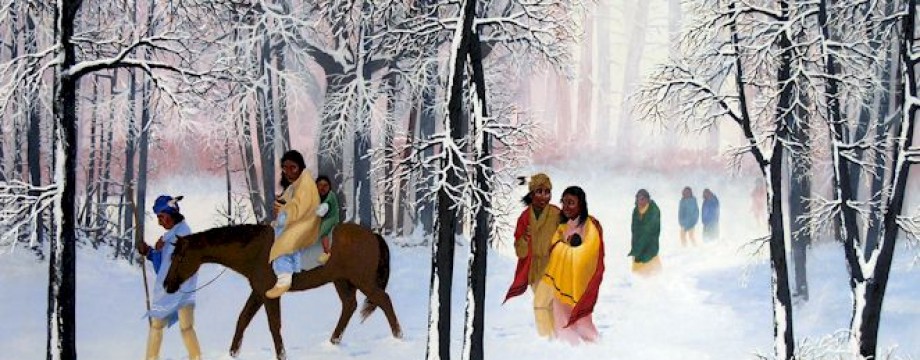

Photos of John Ross, Principal Chief
It remains a misconception that the Trail of Tears was a homogeneous migration in which all Cherokee moved from their ancient homelands in eastern United States to settle in the newly christened ‘Indian Territory’ of Oklahoma. However, the Cherokee moved into the west in waves. Actually, many Cherokee settled in northwest Arkansas (hence the creation of Fort Smith) and eventually were forced to give up that land to live in designated areas of Oklahoma. The Trail of Tears consisted of many deadly branches that forced some Cherokee to arrive later than other members. Some Cherokee simply refused to leave their homeland until they were absolutely forced, while others left more willingly.
Thomas Buffington, who was Principal Chief of the Cherokee Nation from 1899 to 1903, gives the simplest explanation of the two main Cherokee groups to move:
“I have had many ask me the difference in an ‘Old Settler Cherokee’ and an ‘Eastern Emigrant.’ An old settler is a Cherokee who came with the first bunch from Georgia without being forced by the government. An eastern emigrant is one that remained behind and was forced by the government to remove to the new country, west of the Mississippi and this movement was known as the ‘Trail of Tears.'” (Cherokee.org)
When the Cherokee Nation uprooted their last groups from Georgia in 1838, they met in Council at Aquohee and enacted a resolution that would have a resounding impact for their group. In The Cherokee Nation and the Trail of Tears, before leaving, “they affirmed that ‘the title of the Cherokee people to their land is the most ancient, pure and absolute known to man,’ and the insisted that ‘the original title and ownership of said lands still rest in the Cherokee Nation” (Perdue and Green 146). Here the Cherokee are tying their organic jurisdiction to the land of Georgia directly to themselves, so that they metaphorically carry their homeland where ever they go. The use of the word “in” as opposed “with” indicates an internalization of their homeland and their ownership of it. Despite being forcibly removed, the Cherokee Nation retains their jurisdiction, albeit without the lines found on a Georgia map. As cliche as it sounds, they are adopting the old adage: ‘home is where the heart is.’ They have resolved to recreate their community, their cultural tie to the land in Oklahoma. The United States government may take their land, but they can never take away the Cherokees close, emotional tie to land. It remains baffling that the federal government failed to see how the Cherokee had an “original title and ownership” to a land that the tribe had been living on for hundreds of years.




